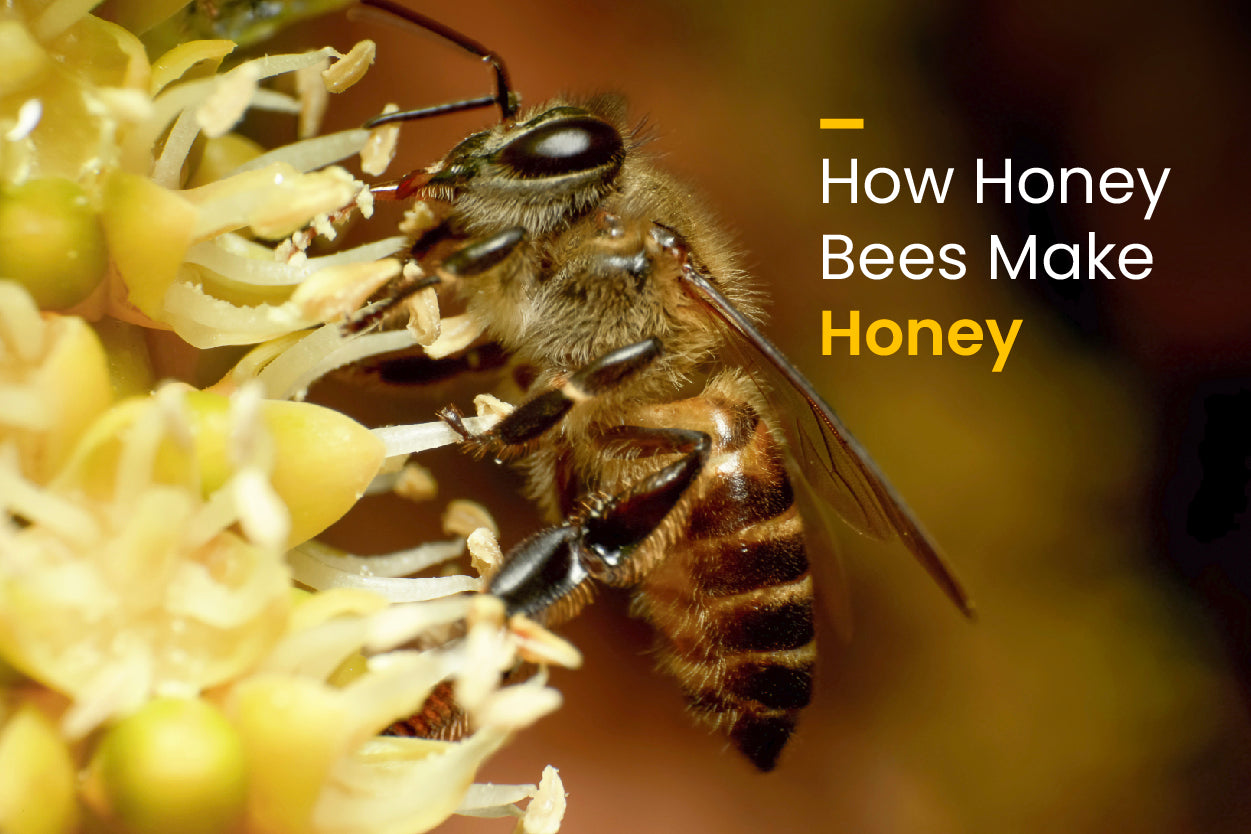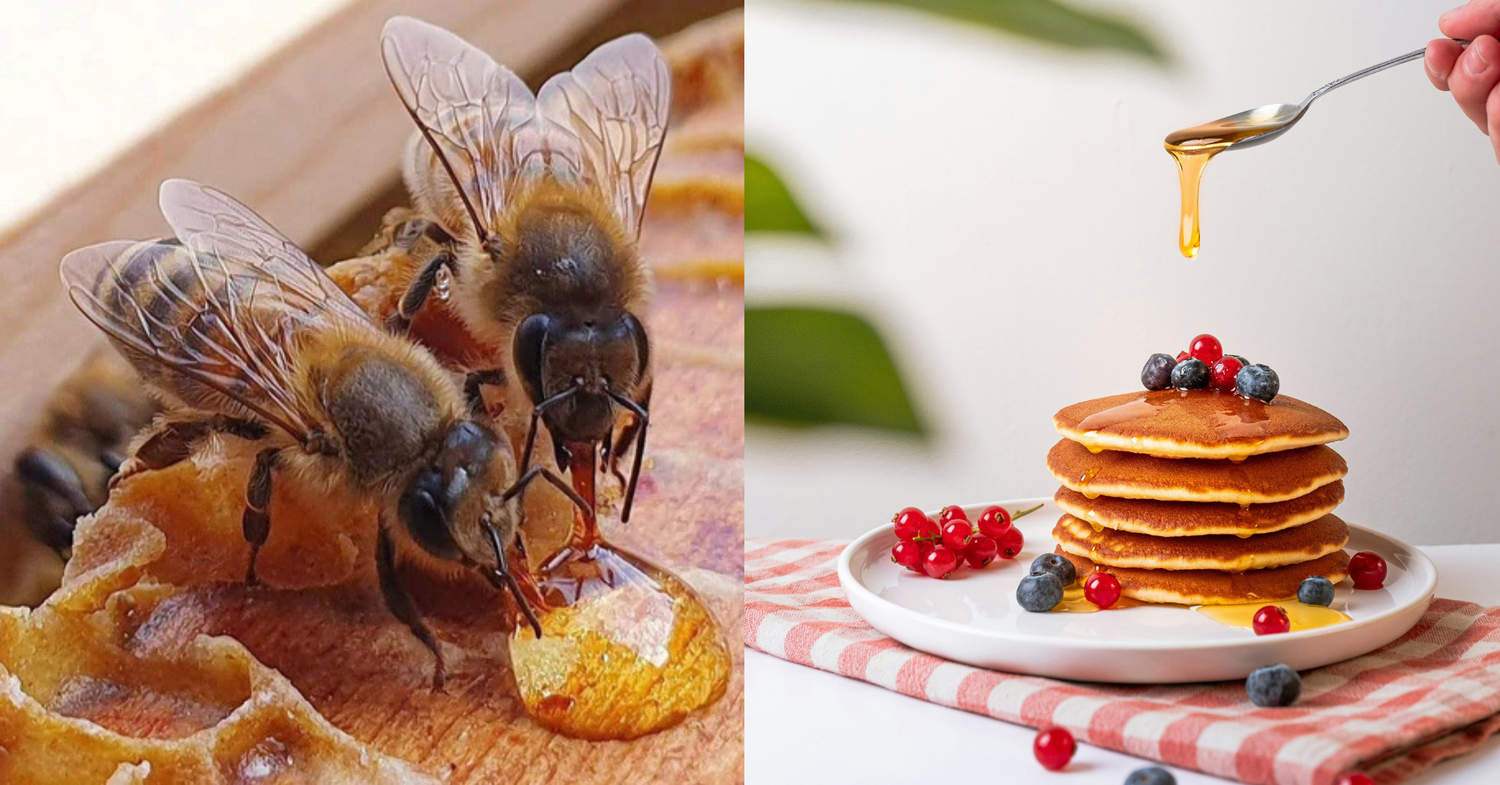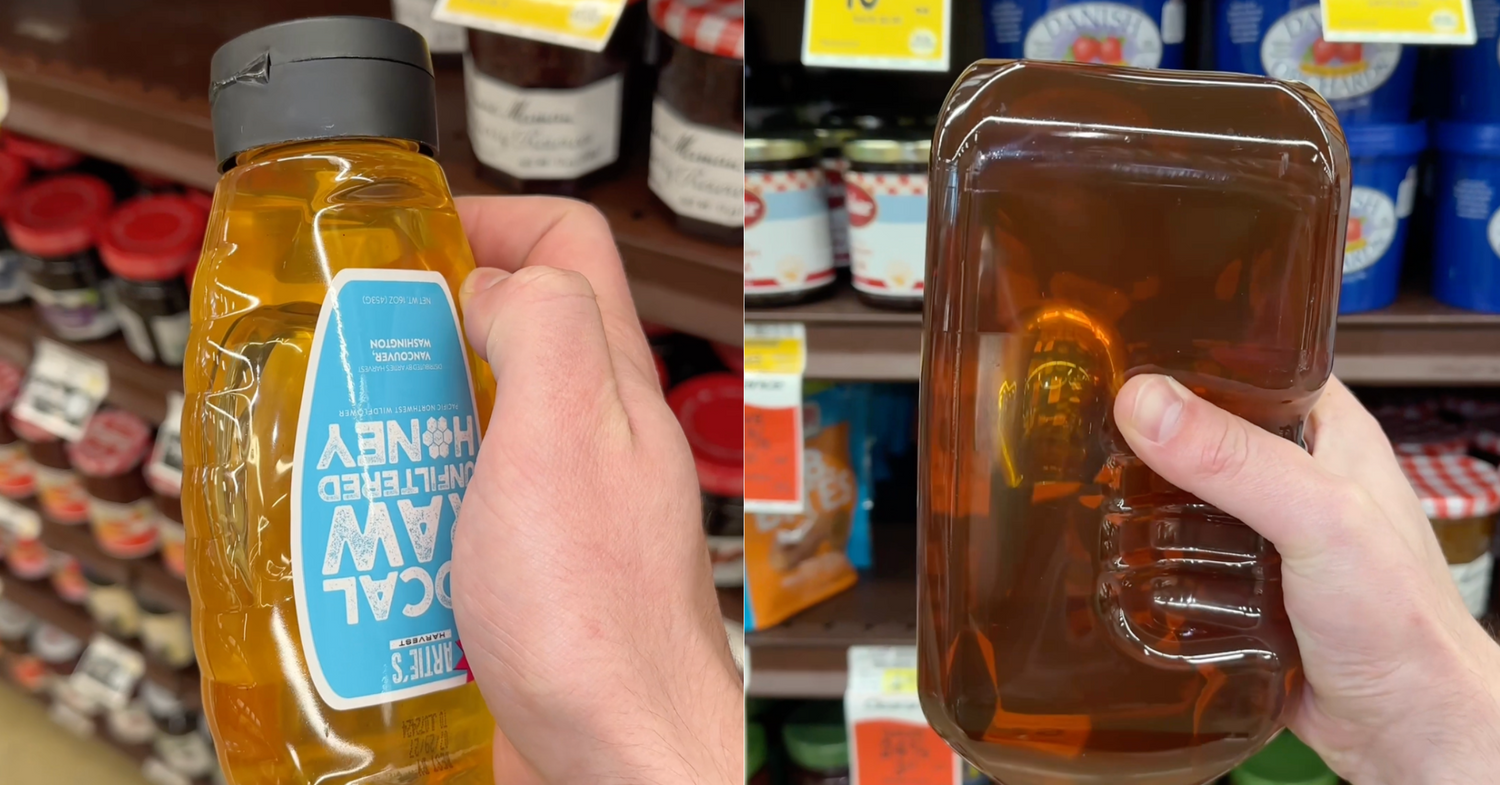- Honey bees as pollinators:
Honey bees are the most important pollinators around the world. A honey bee visits the flowers to obtain their food and in return pollinate them. They collect a sugary juice called nectar from the blossom by sucking it out with their tongues (proboscis).
- Collection of nectar:
The nectar, along with a little bit of honey bee saliva, is stored in a special sac called a honey stomach. Once the honey stomach is full, the worker bee will return to the hive to drop off the load. There, they pass it on through their mouths to other worker bees who chew it for an hour. It's passed from bee to bee until it gradually turns into honey.
- Role of worker bees:
The worker bees pass the nectar to the waiting bees so they can really start the honey-making process. As the nectar is chewed and passed from bee to bee, enzymes change its pH and other chemical properties. At this stage, the nectar and enzyme mixture contains too much water to be stored over the winter.
- Evaporation process:
The honey is still a bit wet, so they fan it with their wings to make it dry out and become stickier. Some water is removed from the honey while it is passed from bee to bee. But, bees use two other methods for drying out the honey. For one, they will spread the honey over the honeycomb. This process increases the surface area and allows for more water evaporation. Bees will also fan their wings near the honey to increase airflow and evaporate even more liquid. Eventually, the honey will have a water content of about 17-20%, down from a whopping 70%.
How do bees pollinate
Honey bees usually have a radius of three miles, though this depends on the time of year and type of forage. The best forage attracts 100 times more pollinators than the worst, with a single honey bee typically visiting around 7,000 flowers a day. These collaborative creatures even perform a ‘waggle dance’ on the honeycombs in the hive to communicate the direction and distance to top-quality forage to fellow workers. Crucially, conveying where they have collected food from helps sustain a healthy colony.
- Taste and color variations due to different plant varieties:
Bees are attracted to different plants for a variety of reasons, from high sugar content to an alluring scent. The subtle flavors we enjoy in different kinds of honey depend on the plants visited. The natural varieties of honey make it even more exquisite and it’s all due to honey bees. The pollination process is unbelievably fascinating and complicated. Simply put, a honey bee sucks the nectar through its proboscis which traverses down into its ‘honey stomach’. As they forage, fluffy pollen gathers on their body and is packed in ‘baskets’ on their rear legs, which are striking when full. Nectar is the major energy source while pollen contains protein. The wondrous worker bee then returns to the hive so honey production can begin.
How honey is made
- Sucking and breaking down nectar into simple sugars:
Once back at the hectic hive, the honey bee passes the nectar to another bee. This is perfectly hygienic as the nectar never enters their digestive system. This second bee sucks up the freshly shared nectar then passes it to another bee, which passes it on again. Consequently, the nectar is broken down into natural sugars.
- Importance of super boxes:
Next, it’s flown up to the top of the hive, where cells called ‘super boxes’ are located. A bee deposits a tiny droplet of honey into one of the honeycomb cells. As the day goes on, these cells are gradually filled. Nectar is very high in water, so the honey bees collectively flap their wings to drive off the water until its moisture content is reduced from approximately 90% to 18% on the whole.
- The reason why honey will ferment:
If the water content is too high, the honey will ferment. But these incredible creatures instinctively know when the nectar is sufficiently dry enough to create the perfect consistency of honey. Once the bees are satisfied that they have successfully dehydrated the nectar, the honey ripens and they seal the cell with beeswax.






